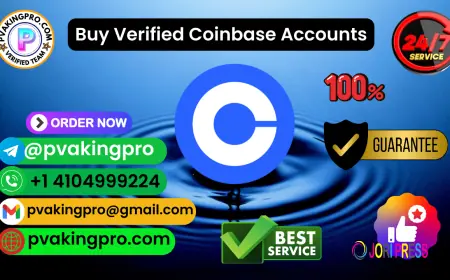Ingrown Toenail Removal Near Me: What to Expect and How to Heal Faster
Discover professional ingrown toenail removal near me, what to expect, recovery tips, and expert care to heal faster and prevent future ingrown toenails.
Experiencing an ingrown toenail can be painful and frustrating. Many people search for "ingrown toenail removal near me" to find professional care that provides relief quickly. Understanding what to expect during the procedure and how to care for your toe afterward can make the experience less stressful and speed up recovery. This guide will walk you through symptoms, treatment options, recovery tips, and preventive measures to help maintain healthy feet.
An ingrown toenail occurs when the edge of a toenail grows into the surrounding skin. This can cause swelling, redness, pain, and sometimes infection. The big toe is most commonly affected, but any toe can develop this condition. Factors contributing to ingrown toenails include improper nail trimming, wearing tight shoes, foot injuries, or genetic tendencies. Delaying treatment can worsen the condition, leading to infections or chronic discomfort. This is why finding "ingrown toenail removal near me" is crucial for timely and effective care.
Typical symptoms of an ingrown toenail include tenderness along the side of the nail, redness, swelling, and signs of infection such as pus or foul odor. Some people also experience difficulty walking or performing daily activities due to pain. If these symptoms persist, consulting a specialist for professional removal is highly recommended. Searching "ingrown toenail removal near me" connects you with experienced podiatrists who can assess your condition and provide the best treatment option.
Professional ingrown toenail removal involves different techniques depending on severity. For mild cases, a podiatrist may perform a partial nail removal, trimming the ingrown portion while applying local anesthesia to minimize discomfort. In more severe or recurring cases, full nail removal may be necessary to allow the nail to grow back properly. In rare instances, permanent nail removal may be recommended to prevent repeated ingrowth. Attempting to remove an ingrown toenail at home is risky and can lead to infections or further damage, making professional care the safest option.
Recovery after ingrown toenail removal is essential for proper healing. Keeping the area clean with gentle washing, applying antibiotic ointment, and covering the toe with a sterile bandage are critical steps. Wearing comfortable shoes that do not press on the toe helps prevent irritation. Most people notice relief from pain within a few days, but complete healing can take up to two weeks. Follow-up visits with your podiatrist ensure that the nail grows back correctly and that no infection develops.
Preventing future ingrown toenails is equally important. Cutting nails straight across rather than rounding the edges, avoiding trimming too short, wearing well-fitted shoes, and maintaining proper foot hygiene are all effective measures. Protective footwear during sports or physical activities can also reduce the risk of trauma to the toenail. By combining professional treatment with preventive care, you can minimize the chances of needing "ingrown toenail removal near me" again.
While waiting for treatment, there are a few home care tips to manage discomfort. Soaking the affected foot in warm water several times a day can reduce swelling and soften the skin. Elevating the foot helps decrease inflammation, and over-the-counter pain relievers can temporarily ease discomfort. Avoiding tight socks or shoes that put pressure on the toe is also important. These measures can provide relief but do not replace professional removal.
When searching for "ingrown toenail removal near me", consider factors such as the podiatrist’s credentials, experience with ingrown toenail procedures, clinic cleanliness, patient reviews, and accessibility. Choosing a qualified professional ensures a safe, effective, and timely procedure. Related LSI keywords like toenail infection treatment, foot care clinic, nail trimming problems, and podiatrist near me can also help you understand treatment options and improve SEO for content targeting this topic.
Ingrown toenails should never be ignored. Professional removal not only provides immediate relief but also prevents infection and promotes proper nail growth. Combining expert care with preventive strategies like proper nail trimming, comfortable footwear, and foot hygiene ensures long-term foot health. Don’t let an ingrown toenail interfere with your daily life—search "ingrown toenail removal near me" today to find expert help.
FAQs
Q1: How soon should I see a doctor for an ingrown toenail?
A1: If pain, redness, or swelling persists for more than a few days, or if there are signs of infection, consult a podiatrist promptly.
Q2: Is ingrown toenail removal painful?
A2: Local anesthesia is used during the procedure, making it largely painless. Mild discomfort may occur during recovery.
Q3: Can ingrown toenails come back after removal?
A3: Recurrence is possible, especially if preventive care is not followed. Proper trimming and footwear help reduce the risk.
Q4: How long does healing take after removal?
A4: Mild cases may heal within a few days, while more extensive removal can take up to two weeks for full recovery.
Q5: Can I walk normally after the procedure?
A5: Most people can walk normally immediately, but it’s recommended to wear comfortable shoes and avoid pressure on the affected toe during the first few days.
What's Your Reaction?
 Like
0
Like
0
 Dislike
0
Dislike
0
 Love
0
Love
0
 Funny
0
Funny
0
 Angry
0
Angry
0
 Sad
0
Sad
0
 Wow
0
Wow
0



















































